Solutions
Horse Construction offers full range of structural strengthening materials with technical supports, documentation supports, products supports, project supports.
Common Diseases and Reinforcement Methods of Reinforced Concrete Bridges
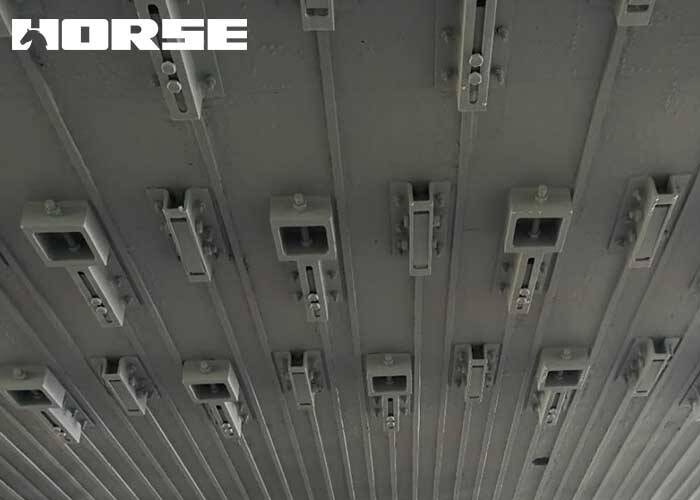
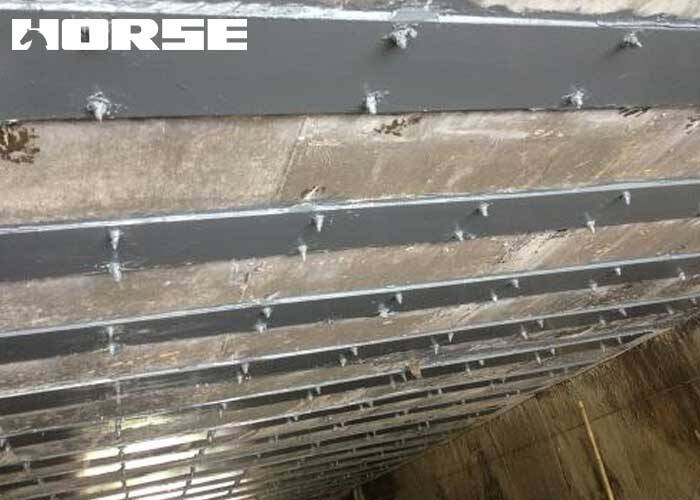
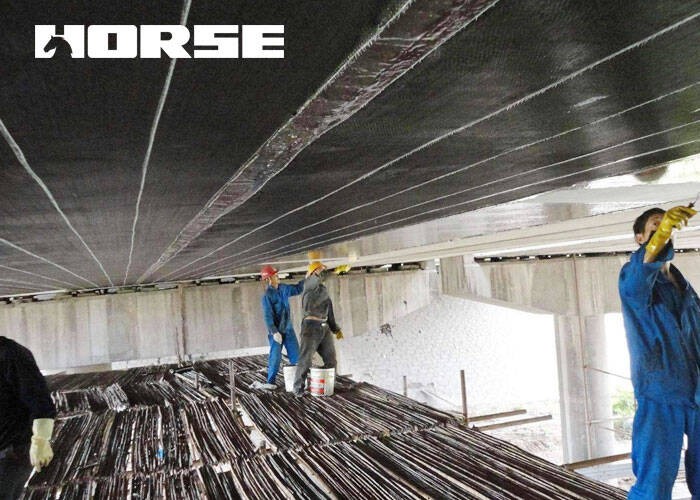
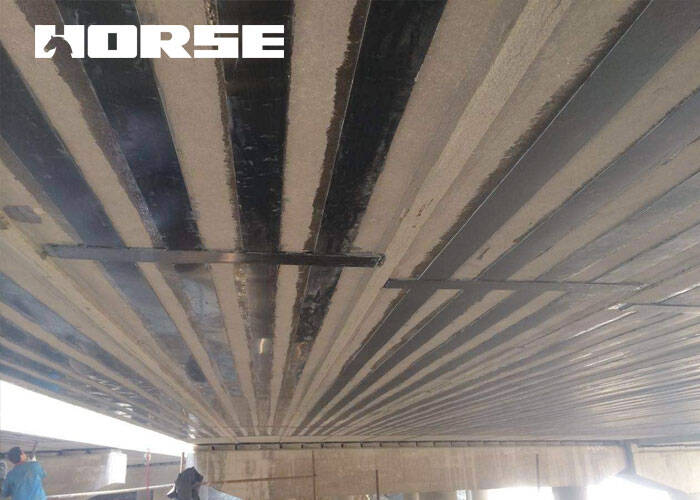
Simply supported slab bridge
1. Common diseases
(1) The construction quality of the hinge joints of the fabricated simply supported slabs is not high, which reduces the integrity between the plates and is easy to cause longitudinal cracks at the hinge joints;
(2) Due to construction reasons, the height of the cushion stone of the support is incorrect, the quality of prefabrication installation is poor, the warping of the slab or the uneven settlement of the pier and abutment will cause the support to appear empty;
(3) Adopting the pre-tensioning method for construction, the thickness of the bottom plate is insufficient due to the construction, and the corrosion of the steel bar caused by the carbonization of the concrete can easily lead to the longitudinal cracks at the bottom of the plate;
(4) When the veneer is under stress and the web thickness is insufficient, it is easy to cause the web to shear oblique cracks.
2. Optional reinforcement method
(1) When longitudinal and transverse cracks appear at the bottom of the slab, the method of pasting steel plates or carbon fiber can effectively improve the bearing capacity of the structure, but it cannot improve the deflection of the beam in the middle of the span;
(2) If the support is empty, it is usually treated by replacement, wedge reinforcement, steel backing plate, etc.;
(3) Methods to change the structural system such as adding bridge piers in the middle of the span can effectively improve the middle-span deflection of the bridge structure;
(4) The method of anchoring shotcrete to strengthen the bridge structure can effectively improve the bearing capacity of the slab;
(5) The thickened pavement method can effectively reinforce the longitudinal cracks at the hinge joints of the bridge deck.
Prestressed concrete continuous slab
1. Common diseases
(1) Insufficient flexural bearing capacity of continuous slab bridges will cause vertical cracks from bottom to top around the bottom of the mid-span slab;
(2) Insufficient bending resistance of the fulcrum section will cause cracks on the bridge deck on the top of the pier;
(3) Insufficient thickness of the concrete protective layer will cause longitudinal cracks around the bottom of the bridge's mid-span slab;
(4) Irregular use of admixtures will cause cracks along the steel bars;
(5) Insufficient prestress of the continuous slab bridge will cause deflection in the middle of the span and cause lateral cracks in the bottom plate.
2. Optional reinforcement repair method
(1) Adopting pasted steel plate or carbon fiber reinforcement method can effectively improve the force of the beam to prevent the cracks at the bottom of the plate from developing.
(2) Prestressed tendons are added in the pavement layer in the negative moment area on the top of the pier to effectively suppress the cracking of the bridge deck at the top of the pier.
(3) Adding diagonal supports at or near the mid-span to change the structural system can improve the mid-span deflection.
Prestressed concrete simply supported beam
1. Common diseases
(1) The large vertical deflection of the beam in the middle of the span causes a large number of lateral cracks to form at the bottom of the nearby beam;
(2) Due to the insufficient section of the web of the beam body, its own shear resistance is too small, resulting in the development of diagonal cracks on the web near the support;
(3) The local stress concentration under the anchor produces splitting tension, which leads to longitudinal cracks under the anchor;
(4) Various reasons such as insufficient tensile stress or loose tendons cause excessive loss of prestress, resulting in excessive deflection in the middle of the span.
2. Optional reinforcement repair method
(1) The enlarged section method and the pasting method can effectively strengthen the bending cracks at the bottom of the beam and the longitudinal cracks along the prestressed tendons;
(2) Steel plates or fiber composite materials can be pasted along the direction orthogonal to the cracks to reinforce the oblique cracks of the web. Shrinkage cracks or small anchoring cracks should be sealed with epoxy resin, and when the cracks are wide, the filling technique should be used for reinforcement;
(3) Methods such as increasing the thickness of the pavement layer and transverse reinforcement, increasing the number of transverse partitions, and increasing the size of transverse partitions are mostly used to deal with the longitudinal cracks of the bridge deck.
Prestressed concrete continuous beam
The span of continuous beam T-shaped section is mostly less than 30 meters, and the span of box-shaped section beam is more than 30m, and variable-height unequal-span beams are used. I-shaped section is not common. There are many types of bridge diseases of this kind.
1. Common diseases
(1) Excessive concentrated stress near the tooth plate causes oblique cracks behind the tooth plate;
(2) The transverse bending moment of the top and bottom plate is large, but there is no pre-stressed tendon in the horizontal direction, and the large temperature difference between the inside and outside of the box girder causes temperature stress and other reasons, which will cause longitudinal cracks on the top and bottom plate of the box girder;
(3) Excessive local stress at the stem axillary will cause longitudinal cracks there;
(4) Insufficient flexural rigidity causes excessive mid-span deflection, which causes horizontal cracks at the bottom of the beam, and diagonal cracks in the web. The transverse bending effect of the box girder and the internal and external temperature difference stress cause horizontal cracks in the web;
(5) The beam section between the pier support point and the inverted point is likely to form diagonal cracks in the web. Improper handling of the construction joints will cause cracks in the joints.
2. Optional reinforcement repair method
(1) External prestressing can be used as an effective means to solve the problem of continuous beam mid-span deflection;
(2) After filling the joints, pasting composite materials such as thin steel plates or carbon fibers can treat the cracks near the anchoring tooth plate. The longitudinal cracks of the stem and axillary are usually sealed with epoxy resin first, and then the fiber composite material is pasted;
(3) Add longitudinal ordinary steel bars or unbonded prestressed tendons at the top of the beam, and set up external prestressed cables to repair the pier top bridge deck and the bottom transverse and longitudinal cracks of the mid-span beam;
(4) The cracks in the non-stressed segmented joints can be filled with glue and sealed, and the pasting method is the most common way to solve such cracks;
(5) Adding transverse external prestress on both sides of the transverse partition can effectively suppress the cracking of the transverse partition, and the method of applying prestress in the longitudinal or vertical direction can also achieve the purpose of reinforcement.
You can find anything here you are in need of, have a trust trying on these products, you will find the big difference after that.

High strength, unidirectional carbon fiber wrap pre-saturated to form a carbon fiber reinforced polymer (CFRP) wrap used to strengthen structural concrete elements.

High strength carbon fiber reinforced polymer (CFRP) strip / laminate / plate for structural strengthening and concrete repair
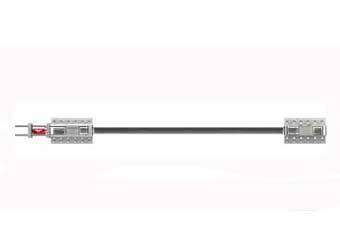
Prestressed carbon fiber reinforced polymer(CFRP) plate for slab, beam strengthening to increase stiffness, reduce distortion and deflection of members, reduce the cracks, avoid and stop cracking.